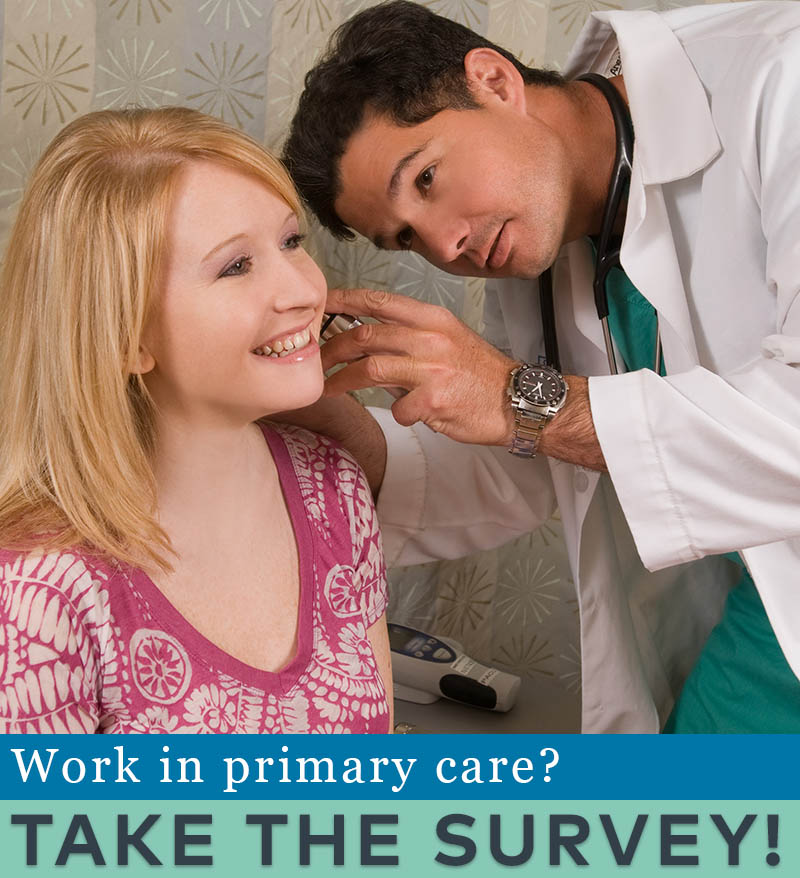You are looking at an archived version of our site. Please visit thepcc.org for a fresh, new experience!
You are here: Array » Recent Survey Shows Pr ...
Recent Survey Shows Primary Care Practices are Overwhelmed, with 1 in 4 Clinicians Planning to Leave within the Next Three Years
WASHINGTON, April 19, 2022 – The Larry A. Green Center, in partnership with the Primary Care Collaborative (PCC), today released new survey data showing that 25% of primary care clinicians plan to leave the field within the next three years. In fact, the same survey revealed 62% of primary care clinicians have personal knowledge of clinicians who retired early or quit during the pandemic.
This data comes at a critical time when primary care clinicians are working on the front lines of preventive medicine, yet no official database exists to track the number of active primary care practices or clinicians in the U.S., and 36% of primary care physicians report burnout levels at an all-time high.
Nearly half of respondents (46%) believe that primary care is crumbling, and more than half (53%) report that their ability to bounce back from or adjust to adversity has become limited – increasing from 29% a year ago.
Two years into the COVID-19 pandemic, primary care clinicians are overwhelmed with patient needs and are seeing more unresolved or exacerbated health concerns from delayed access to care – resulting in longer-than-usual patient visits.
“Primary care practices are a crucial component of our health system, yet they receive an extremely small amount of federal funding, and we have no national tracking system for oversight and to identify what support they need,” said Rebecca Etz, PhD, co-director of The Larry A. Green Center. “Since the onset of the pandemic, primary care clinicians have faced PPE and supply shortages, more COVID-19 health risk than any other specialty, and the huge challenge of moving from in-person visits to telehealth within the span of three weeks. It is time to reduce stress on clinicians as well as stabilize and strengthen the primary care system overall, through formal federal support that includes adequate funding.”
“While we applaud primary care’s resilience and commitment to patients, it is still facing a policy crisis, even if the official COVID-19 public health emergency is soon declared over,” said Ann Greiner, PCC’s President and CEO. “Policymakers must respond or else watch primary care collapse on their watch. The recommendations for policy changes in last year’s report, Implementing High-Quality Primary Care, from the National Academies of Sciences, Engineering, and Medicine are a key launch pad for this response and are supported by a wide cross section of stakeholders.”
Since March 2020, the Larry A. Green Center and Primary Care Collaborative have collected data from primary care clinicians indicating drastic staffing cuts, closures and other financial setbacks that could be alleviated with policy changes that better realize the potential for primary care as an essential function of the healthcare system. The latest data shows that primary care continues to operate in crisis, with understaffed practices seeing an influx of new patients as other practices close. Practices are also struggling financially, with nearly one-third (32%) reporting having current billing either denied or well overdue from insurers or health plans.
The survey of clinicians was fielded from February 25 to March 1, 2022, and received 847 responses from clinicians in 49 states and Washington, D.C. Respondents were made up of: 63% who identified their practice as family medicine, 11% as internal medicine, 5% as pediatrics, 3% as geriatrics, and 4% as other.
More information about the survey
###
About the Primary Care Collaborative
About The Larry A. Green Center:
The Larry A. Green Center for the Advancement of Primary Health Care for the Public Good is a thought collective founded by Rebecca Etz, PhD at Virginia Commonwealth University and Kurt Stange, MD, PhD at Case Western Reserve University. The Green Center works to reclaim and reconstitute the intellectual foundations of primary care, to advance the science of medicine learned and practiced within layered and competing social frameworks of meaning, and to deliver on a now 50 year old promise: better health and improved health care through a synergistic focus on both humanism and healing. We are nimble, inquisitive, curious, and open. We make personal doctoring and innovation visible.

Are you a physician, nurse practitioner, or PA working in primary care?
Help PCC and the Larry A. Green Center track how your practice is responding to the COVID-19 outbreak by completing the Green Center's occasional survey.
The regular surveys are no longer being conducted.
COVID-19 Updates
May 9, 2022 | Primary Care Collaborative
April 19, 2022 | Primary Care Collaborative
April 19, 2022 | Primary Care Collaborative
March 7, 2022 | STAT
February 27, 2022
- 1 of 39
- suivant ›

Recent News
August 16, 2024
August 12, 2024
July 16, 2024
May webinar highlights: “The Commercial Market: Alternative Payment Models for Primary Care” Nate Murray explains w… https://t.co/KX9Wi2w6oY —
Il y a 2 années 6 mois
@CMSinnovates’ primary care strategy is rooted in a 2021 @theNASEM’s report which called #primarycare “foundational… https://t.co/glbPxvCysg —
Il y a 2 années 6 mois
@CMSinnovates has a new #primarycare strategy, envisioning “ACO-based primary care model tests that may focus on pr… https://t.co/aJGF1z411l —
Il y a 2 années 6 mois
- Page 1
- ››
Secondary menu
Copyright © 2024 Primary Care Collaborative



